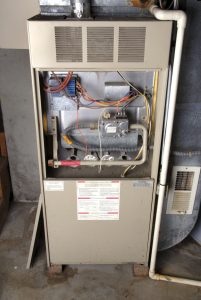As winter fades and warmer days approach, it’s tempting to put off furnace concerns and focus on springtime activities. However, if your furnace has been running steadily through the colder months, it may develop issues that shouldn’t be ignored. Addressing heating repair in Forsyth, GA now can prevent costly breakdowns, improve efficiency, and ensure your heating system is ready when cold weather returns.
We recommend keeping an eye out for these late-season furnace issues and scheduling repairs promptly—even if warmer days are on the horizon.
1. Reduced Heating Efficiency
After months of use, your furnace may not be heating as effectively as it did at the start of the season. A decline in efficiency can be caused by clogged filters, dirty burners, or wear and tear on internal components. If you notice that your furnace is struggling to maintain consistent warmth or your energy bills have increased, it’s a sign that your system needs professional attention.
2. Short Cycling
Short cycling occurs when a furnace turns on and off more frequently than normal, failing to complete full heating cycles. This issue can stem from a dirty air filter, a malfunctioning thermostat, or even overheating due to restricted airflow. Short cycling reduces comfort and places unnecessary strain on your furnace, increasing the risk of a breakdown.
3. Strange Noises
A properly functioning furnace should operate relatively quietly. If you begin to hear banging, rattling, or squealing sounds, it could indicate loose components, a failing blower motor, or ignition issues. Ignoring these noises can lead to more severe damage, so it’s best to have a professional diagnose the problem sooner rather than later.
4. Pilot Light or Ignition Issues
Gas furnaces rely on a pilot light or electronic ignition system to start heating. If your furnace struggles to ignite or frequently shuts off, there may be an issue with the ignition system, thermocouple, or gas supply. A faulty ignition system can leave you without heat on colder nights and should be repaired promptly to ensure your furnace remains safe and functional.
5. Worn-Out Components
Continuous operation throughout the winter can lead to wear and tear on essential furnace components such as belts, bearings, and the blower motor. If any of these parts begin to fail, you may experience reduced airflow, overheating, or complete system shutdown. Routine maintenance and timely repairs can extend the lifespan of your furnace and prevent unexpected failures.
6. Carbon Monoxide Leaks
One of the most serious furnace concerns is the potential for a carbon monoxide (CO) leak. Cracked heat exchangers or faulty venting systems can allow this dangerous, odorless gas to seep into your home. Symptoms of CO exposure include headaches, dizziness, and nausea. If you suspect a carbon monoxide issue, turn off your furnace immediately, open windows for ventilation, and contact a professional for an inspection.
Why Late-Season Furnace Repairs Are Important
Even if you don’t expect to use your furnace much longer this season, addressing problems now can save you from costly repairs or replacements later. Neglecting issues may lead to worsening damage over time, resulting in a non-functional furnace when you need it next winter. Additionally, fixing problems promptly ensures that your heating system remains energy-efficient, reducing strain on your budget.
If you’re experiencing any of these late-season furnace problems, don’t hesitate to schedule a professional inspection and repair. Taking care of your furnace today means you’ll have peace of mind when the temperatures drop again.
Experience the Premier Difference! Premier Heating & Air has been family-owned and operated since 2001.


